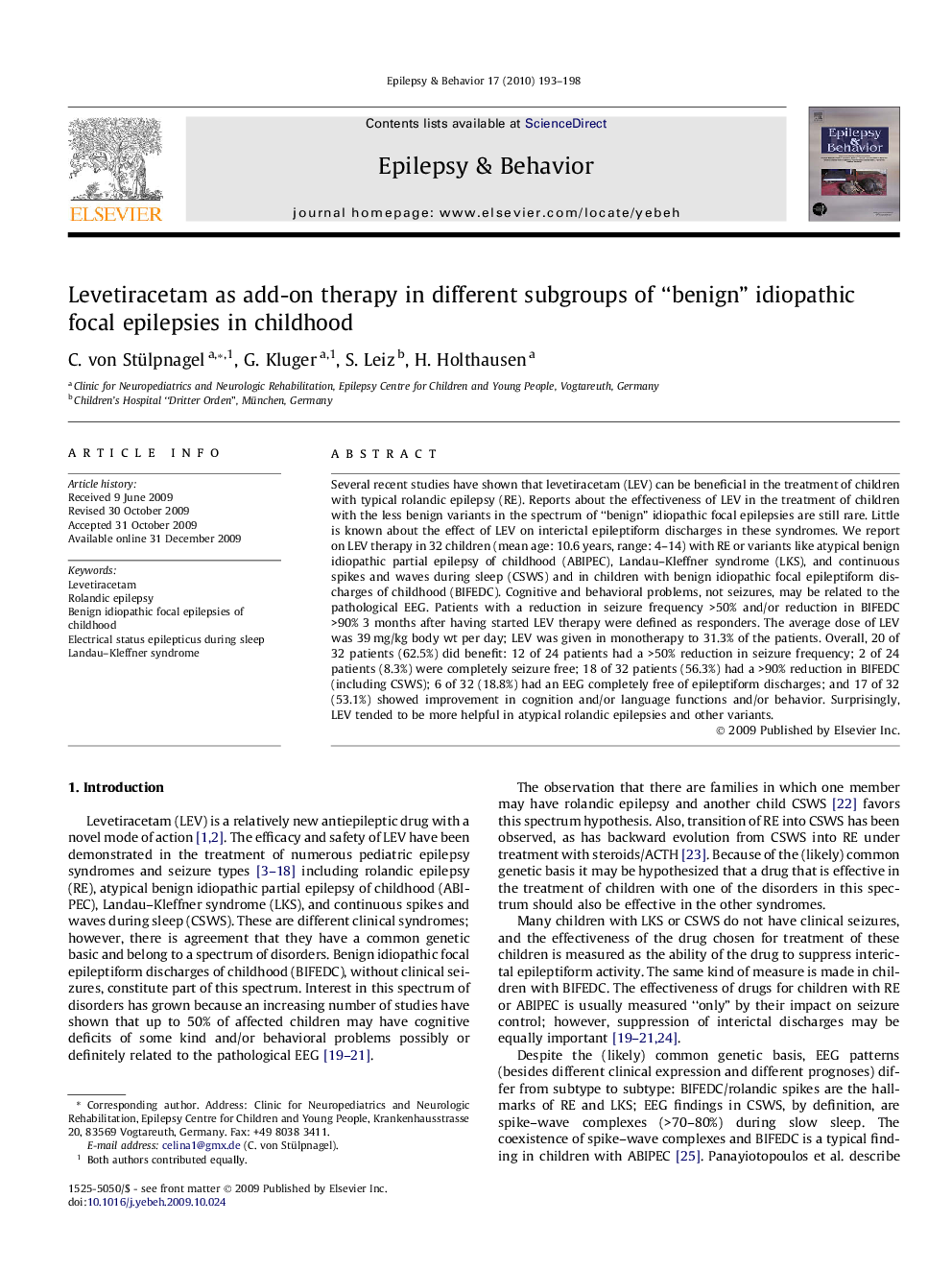| Article ID | Journal | Published Year | Pages | File Type |
|---|---|---|---|---|
| 3050268 | Epilepsy & Behavior | 2010 | 6 Pages |
Several recent studies have shown that levetiracetam (LEV) can be beneficial in the treatment of children with typical rolandic epilepsy (RE). Reports about the effectiveness of LEV in the treatment of children with the less benign variants in the spectrum of “benign” idiopathic focal epilepsies are still rare. Little is known about the effect of LEV on interictal epileptiform discharges in these syndromes. We report on LEV therapy in 32 children (mean age: 10.6 years, range: 4–14) with RE or variants like atypical benign idiopathic partial epilepsy of childhood (ABIPEC), Landau–Kleffner syndrome (LKS), and continuous spikes and waves during sleep (CSWS) and in children with benign idiopathic focal epileptiform discharges of childhood (BIFEDC). Cognitive and behavioral problems, not seizures, may be related to the pathological EEG. Patients with a reduction in seizure frequency >50% and/or reduction in BIFEDC >90% 3 months after having started LEV therapy were defined as responders. The average dose of LEV was 39 mg/kg body wt per day; LEV was given in monotherapy to 31.3% of the patients. Overall, 20 of 32 patients (62.5%) did benefit: 12 of 24 patients had a >50% reduction in seizure frequency; 2 of 24 patients (8.3%) were completely seizure free; 18 of 32 patients (56.3%) had a >90% reduction in BIFEDC (including CSWS); 6 of 32 (18.8%) had an EEG completely free of epileptiform discharges; and 17 of 32 (53.1%) showed improvement in cognition and/or language functions and/or behavior. Surprisingly, LEV tended to be more helpful in atypical rolandic epilepsies and other variants.
